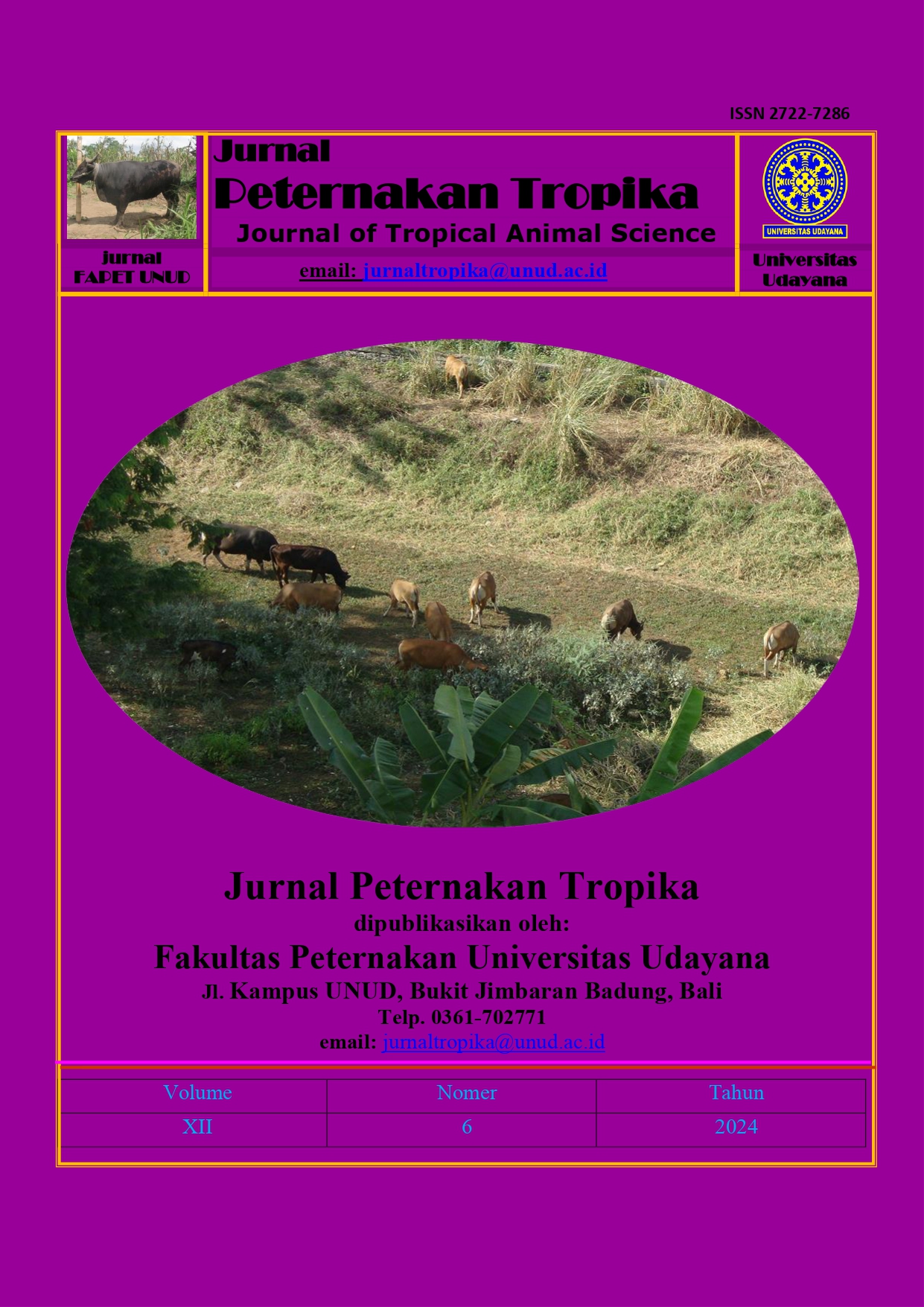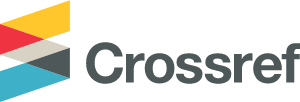THE EFFECT OF DIFFERENT SHADE LEVELS AND DOSES OF GOAT MANURE ON YIELD OF Arachis pintoi ON MEDITERANEAN SOIL
Abstract
Forage cultivation is still possible, especially on marginal land and under plantations, so that livestock in Indonesia still has many business opportunities for the community. The research aims to determine the effect of shade level and goat manure dose as well as the interaction between shade level and goat manure dose on Archis pintoi yields on Mediterranean soil. This research was carried out in Sading Village, Mengwi District, Badung Regency. The research lasted 12 weeks, using a completely randomized design (CRD) with a factorial pattern with two factors. The first factor is the level of shade, namely: N0 = 0% shade, N1 = 20% shade, N2 = 40% shade, and N3 = 60% shade. The second factor is the fertilizer dose: D1 =10 tons ha-1; D2 = 20 tons ha-1; and D3 = 30 tons ha-1, there are 12 experimental units and each treatment is repeated three times so that 36 experimental pots are needed. The variables observed are yield variables and plant growth characteristics. The results showed that there was an interaction between the level of shade and the dose of goat manure on the variable ratio of total dry weight of forage to dry weight of roots. Treatment with a shade level of 40% (N2) gave the best results for Arachis pintoi. Because 40% shade receives optimal light intensity between N1 and N3. Treatment dose of 20 tons ha-1 (D2) gave the best results on Arachis pintoi. It can be concluded that there is an interaction between the level of shade and the dose of goat manure on the variable ratio of total dry weight of forage to dry weight of roots. A shade level of 40% (N2) and a goat manure dose of 20 tons ha-1 (D2) gave the best results of Arachis pintoi on Mediterranean soil.






